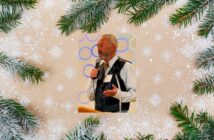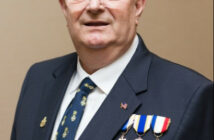 Source: The National Herald
Source: The National Herald
WEST PALM BEACH, FL – Since 1987, Orthodox Christian Laity (OCL) has been the independent voice advocating for a unified Orthodox Christian Community in the United States. That there exist 14 ethnic Orthodox Christian groupings in the United States is incomprehensible to even Orthodox and causes greater confusion for others. Orthodox Christianity is seen as fragmented and in a state of disunity, when in fact no sacramental disunity exists within the liturgical life of these different ethnic group churches.
The Orthodox Church is united in its liturgical and sacramental life here and all over the world. The disunity is administrative. The existence of 14 administrative structures makes for a fragmented church. Maintaining the economic costs of this disunity and the disregard for the efficient use of the stewardship and educational services provided by the faithful is a scandal. Can you imagine the success of its mission if this Apostolic, multi-cultural, multi-ethnic church could be administratively unified and self-governed as the Orthodox Christian American Church?
Orthodox Christian Laity sees the creation of the Assembly of Canonical Orthodox Bishops of North and Central America as an answer to its prayer for moving ahead to create a unified, self-governing, independent Orthodox Church in the Americas. Finally, after 200 years of an Orthodox Christian presence on this Continent, the Patriarchs meeting in Chambesey, Switzerland in October 2008 came to the conclusion that it was time to come to grips with the spread of Orthodoxy to and within pluralistic cultures outside of its present geographic boundaries and into Western Europe, North and South America, Oceana, Australia and Asia. The patriarchs blessed the bishops in the boundaries beyond the mostly homogeneous Orthodox Christian countries to become Assemblies of Bishops in their regions. They challenged the bishops in these areas to work in a conciliar way and come up with a blueprint for unity to present to the meeting of 14 Patriarchs for discussion. so that the blueprint could be presented to a Great and Holy Council of worldwide bishops. This meeting would consider the status of the governance of these regions.
The Assembly of Canonical Bishops of North America has met twice, May 2010 in New York and May 2011 in Chicago, to begin the process of moving toward unity. Although laypersons and clergy are not members of the Assembly, they are consultants and working members of committees headed by bishops that is putting together a new church order. The continued involvement of laity and clergy with the bishops throughout the process is essential, because the Church is the work of all the people working in synergy with each other and offering their gifts to God. Definitely the Holy Spirit is at work accomplishing God’s will that unity and good order be brought to the faithful Orthodox of the Americas. The ball is in the court of the faithful People of God living in North America – clergy and laity alike – to be open and allow the Holy Spirit to work through them to bring about the unity that is the good order of the Church.
The call for Orthodox Unity in America did not begin in 2008 and it is not a new endeavor. During the period before the establishment of ethnic dioceses in the 1920s the church here was guided by the Moscow Patriarchate (because the monastic missionaries of Alaska were the first Orthodox here and deference was given to Moscow). There was much Orthodox Christian cooperation. Early church communities developed by the laity in Galveston in 1862 and New Orleans in 1862 were multiethnic. When the great immigrant migrations from Eastern Europe, the Balkans, the Middle East and Greece reached new heights in the last quarter of the 19th century, the churches established by these immigrants were multicultural. The early hierarchs, leaders of the Church, St. Tikkon, St. Raphael of Brooklyn, and Patriarch Meletios all saw the need for unity and made strong statements supporting this idea.
With the Russian Revolution 1917 and the establishment of ethnic dioceses, ethnic ties became more important than a Christ centered Church for many in leadership positions. Fragmentation and isolation followed and still remains. Today, Orthodox Christians drive miles to attend ethnic Churches – even if there is another Orthodox Church in their neighborhood. The sacrament of communion offered in the Antiochian, Serbian, OCA, or other Orthodox Churches is the same as the one offered in a Greek Orthodox Church, but people drive past each other’s churches to attend a more familiar ethnic church.
Many second and third generations of faithful saw the need for unity and worked to address the issue. The Triumph of Orthodoxy in the United States was truly the gathering together of 15,000 young Orthodox faithful as the first Council of Eastern Orthodox Youth Leaders of the Americas CEOYLA meeting in Philadelphia in 1963. These young people brought together Orthodox of different groupings and the first Pan Orthodox Vesper was celebrated. The hierarchy was taken aback by the independence and growth of the youth and did not encourage the development of CEOYLA. Many were thus lost to Orthodoxy with the failure to work in synergy. Retention of the faithful is a major problem five and six generations later.
The ethnic breakdown within the church is also being precipitated by the seekers who are converting to Orthodoxy. For the past 25 years, a great body of Orthodox Christian Literature has been published in English, and the internet and social networks bring seekers and converts to the Church. Evangelicals, Western Rite mainline religious and others seeking the ancient and Apostolic Church know that the Church is Universal and belongs to them also. But new waves of immigration from former communist lands and the development of certain monasteries in America serve to be new stop gaps to developing an American Church serving people in the American cultural setting.
This period of ferment starting in the late 1950 -1990’s, caused the hierarchy to address the issue of unity by establishing the Standing Conference of the Canonical Orthodox Bishops in the Americas (SCOBA) which did not include all of the bishops of the different Orthodox groupings. The formation of SCOBA was a necessity, because by the late 1950s and early 1960s, there was a need for the different Orthodox Church groupings to meet together to face some common issues. SCOBA never functioned as a synod. It was looked upon with suspicion by the Patriarchs. SCOBA was a necessity due to the circumstances in the United States. The Orthodox lay faithful continued to work together and began to establish agencies that brought them together to do the ministry of the church. After these agencies were up and successfully growing, the SCOBA Bishops blessed their efforts. SCOBA was finally sunset in 2009 when the meeting of the First Assembly of Canonical Bishops of North and Central America met, and the SCOBA Agencies were absorbed into the work of the Assembly as approved entities. For the past two years, the main accomplishment of the Assembly of Bishops has been to form working committees and develop a draft of by-laws which will be discussed in September, 2012.
By the 1990s, even the hierarchy of the Orthodox groupings in the United States saw that there was a need for a new era of inter-Orthodox Cooperation. In December, 1994 the first meeting of all canonical bishops of the United States was held at Antiochian Village in Ligonier, PA. The meeting produced two important statements: “Mission and Evangelism” and “The Church in North America” (which is not a Church in “Diaspora”).
It is time for the Assembly of Bishops to move ahead and make Unity the priority of Orthodoxy in America and to inform every parish community about the progress being made to fulfill this objective and to encourage the parishes to cooperate with each other.
George Matsoukas is Executive Director of the Orthodox Christian Laity.



